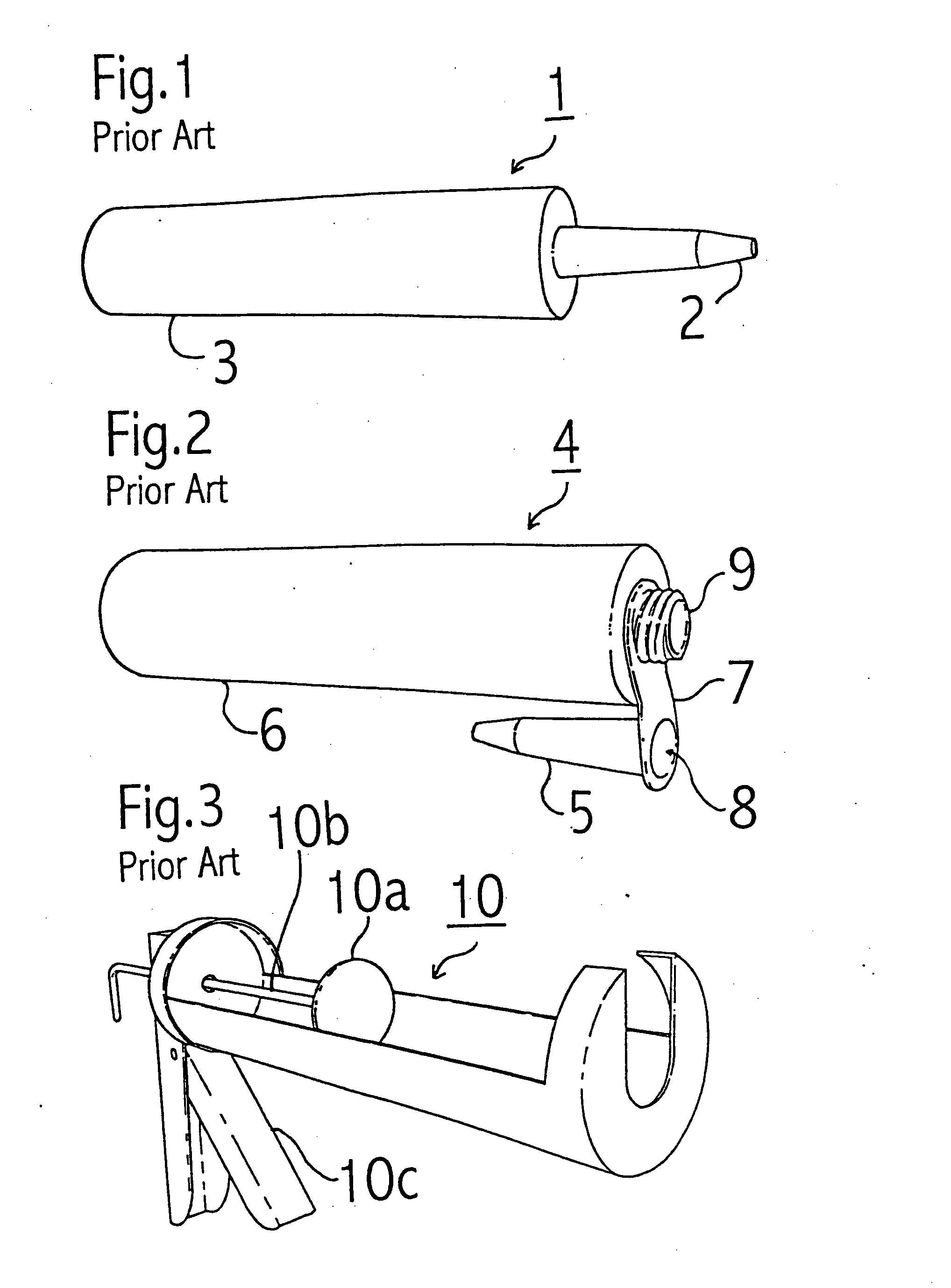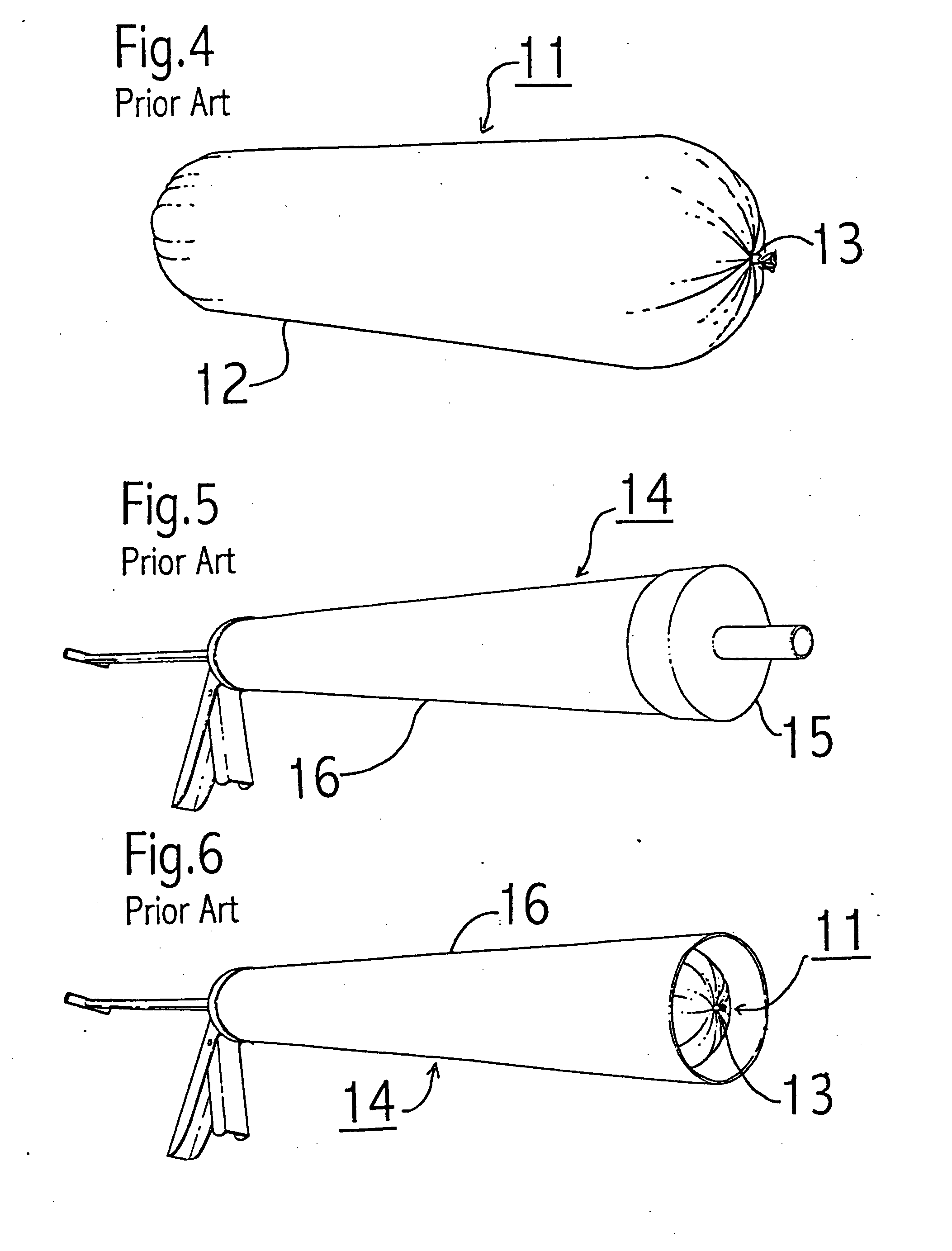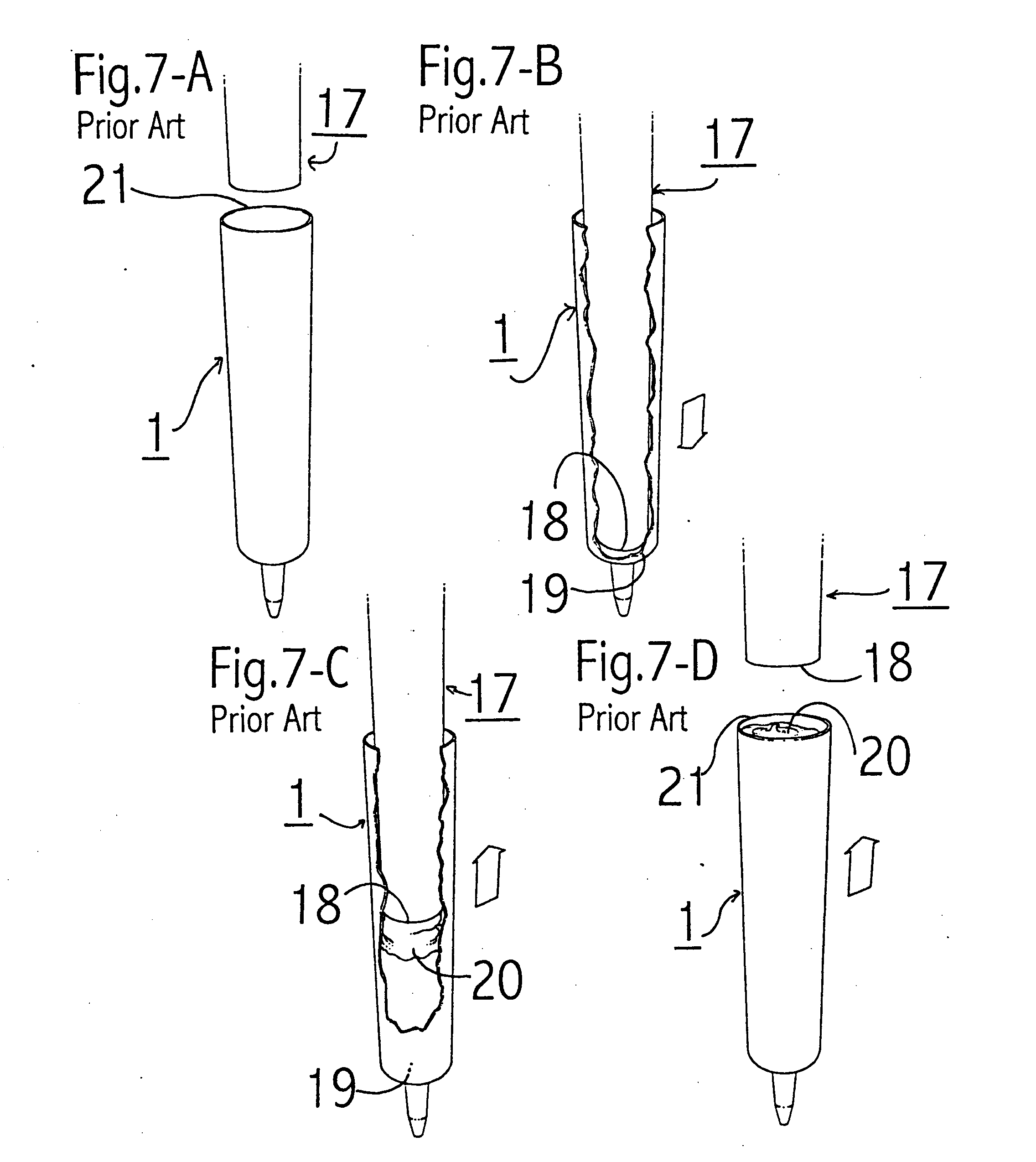However, while 2-component chemistries are currently and widely used in certain industries (both from bulk containers and from pre-loaded specialized packaging), such use has been restricted to using relatively expensive and relatively specialized application or dispensing equipment.
Creighton, for instance, discloses no practical design, feasible method of manufacturing, or reasonable method of factory-filling his package with adhesives or sealants (and, consequently, this design has never been commercialized).
The Maziarz design, while having found some commercial success, requires the use of a separate rigid adapter to permit the primary all-rigid package to be used in a standard caulking gun, and the maximum volume of material that can be placed into this primary package is only about ¼ to ½ the volume normally possible from packages typically used in such dispensing equipment (and the package cannot be readily recycled).
Also, the Konuma design involves a primary collapsible-film package that is much more prone to damage during transport, storage, adapter-
insertion or use than typical rigid cartridges that are widely used in standard, common caulking guns.
Several problems exist with this design.
First, because the
plastic film of the sausage is pulled into and left inside the narrow outlet of the
cartridge, the wad of
plastic film bunched up inside the outlet port can greatly
restrict the flow of the chemical components during dispensing—which may only be a moderate problem if the
viscosity of the fluids is very low (as in the case of this commercial “FIP 300 SF” product), but can be a great problem if the product
viscosity is high and the product is pasty.
Second, it is possible for the chemical components to contact and foul portions of the interior of the rigid
cartridge either during dispensing or during spent-sausage removal from the rigid cartridge—making cartridge reuse or recycling very problematic or impossible, and messy in either case.
Third, the rigid cartridge has several avenues of gaseous fluid communication between the outside
atmosphere and the interior of the package that could partly endanger the
shelf life of certain reactive sealants or adhesives during prolonged storage.
It is important to note that many previous inventors have described and, in some cases, commercialized 2-component specialized packaging that is suitable for use only in specialized, relatively expensive dispensing equipment, but not suitable for use in common, standard and inexpensive caulking guns.
Notably, previous attempts at creating a practical 2-component package for this use have not addressed the need to be able to factory-fill, in a practical manner, such packaging with high
viscosity, pasty adhesives and sealants.
Either this issue has not been dealt with at all in previously disclosed designs, or, when addressed, the methods outlined or implied have not been feasible.
For instance, Keller (U.S. Pat. No. 5,647,510) describes a device that has some similarities to the present invention, but Keller's design calls for the collapsible-film pouches within the device to be attached to one or more relatively small
diameter dispensing nozzles that cannot be practically used for filling the pouches causing the pouches to be filled from the rear of said pouches (i.e., at the
piston end)—as virtually all previous designers appear to have done, with such a filling approach not being readily or easily accomplished in a practical way.
In particular, filling pouches from the rear and non-attached end can cause pinching, a crimping of the pouches, which inhibits the dispensing of the chemicals contained in the pouches.
Furthermore, by filling the pouches from the rear, it is difficult, if not impossible, to completely fill the pouches with chemicals to fully use the possible volume.
The gripping to effectuate a filling procedure can damage or weaken the film at the edge and make the edge prone to failure.
Further, when filling the packages external to a cartridge body (again conventional and exemplified by Keller and the other cited prior art), they are susceptible to bulging along the length.
When the package bulges, it becomes difficult to insert the bulging package in the cartridge body without damaging the package.
Even assuming the package was filled without damaging the edges, and inserted in the cartridge body without damaging the package, sealing the open end of the package (i.e., the end that was filled) is problematic at best.
In particular, gathering the open end of the package to seal the package with a traditional clip would likely cause voids or unused space, which is not efficient.
Alternatively, using a seal, such as a heat seal, runs the risk of
fouling the sealing surface with the chemicals and causing a weaker seal.
If the issue of efficiently filling such packages at the factory is not adequately addressed (and the factory-filling of such high viscosity, pasty materials as adhesives and sealants into hand-held, collapsible-film packaging is far more difficult than the factory-filling of low-viscosity, thin fluids), then it becomes difficult or impossible to economically produce such a package / product combination.
The reason is that such all-plastic containers do not provide sufficient
moisture vapor permeability resistance to prevent premature and rapid curing of highly
moisture sensitive polyurethanes during storage.
 Login to View More
Login to View More 


